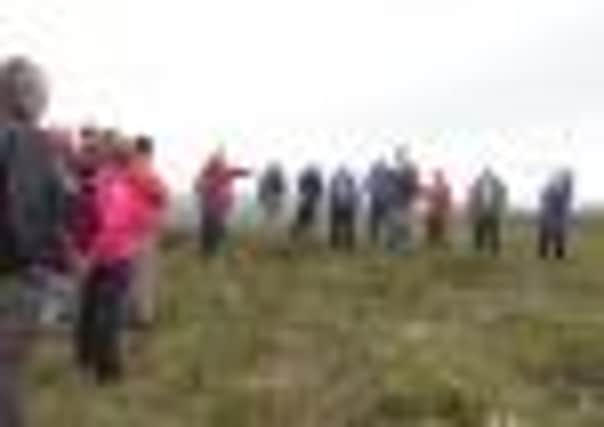New Bronze Age Cashel found on Carntogher Mountain


Whilst not our highest mountain, the vista from the top of Carntogher is magnificent. From the summit can be seen Errigal and Muckish in Donegal, Lough Foyle, Islay in Scotland, Slemish, the Belfast Hills, the Mournes, Lough Neagh. It is clear that the site is central in its own right to a wide piece of the local landscape.
The name of the mountain itself, from the Irish ‘Carn Tóchair’, means: the Carn of the ‘tóchar’. A ‘tóchar’ was a raised roadway to allow travel and transportation across wet and soft land. In ancient times the engineers were not adverse to building (successful) causeways across bogs and mires, instead of going around them as today’s engineers might prefer to do.
Advertisement
Hide AdAdvertisement
Hide Ad“Even though the mountain may appear remote today, it certainly wasn’t in the past,” explained Mr McCooey. “In more recent times, the old coach road winding up the mountain and its firm construction demonstrates that this was meant to last as a functional transport structure. This is no local mountain path, but an important highway of its time.”
Additionally, rigs (raised beds to grow crops) on the side of the mountain suggest past pressure on the land – a sign that many people lived further up the mountain in days gone by. The interesting thing about the rigs on Carntogher, however, is their breadth, which suggests a date prior to the heavier dependence upon the potato, i.e. prior to the 19th century potato famines. Pressure and the need to utilise marginal land pre-dates the more infamous famine periods.
But it was on top of the mountain, where there is a plundered cairn of the bronze age – a possible passage tomb, that another interesting discovery was made. One of the locals queried the difference in the vegetation a little bit away from the documented cairn, and this is what caught the interest of Paul McCooey as an archaeologist most. From an initial scoping, Paul was able to discern that this was potentially a bronze age ‘cashel’ – a stone ring fort - with a potential souterrain. With an archaeologist’s eye, Paul was able to discern potential sites of houses within the cashel.
Whilst the cairn is listed within the Sites and Monuments of the Environment Agency, there is no mention of a potential cashel atop Carntogher. Therefore, even though local people have been aware of the site and its different vegetation, this new archaeological insight into a potential new archaeological feature on the mountain, raises more interesting questions about our ancestors and the importance of this mountain from which can be seen a view from Donegal to Scotland and from the shore of Lough Foyle those of Lough Neagh.
Advertisement
Hide AdAdvertisement
Hide AdAs part of the ‘Envision – community heritage project’, Paul McCooey will be providing training and guidance in community archaeology and some community excavations in the area. To get involved in this part of Envision contact Pól Mac Cana at An Carn, 02879549978, [email protected]. Live opportunities at: www.ancarn.org/volunteer.
The walk above was part of the Envision project supported by the Heritage Lottery Fund, SWARD, Land Fill Tax and CEDaR, and the Reconciling Communities project supported by the International Fund for Ireland and the Rural Development Council.